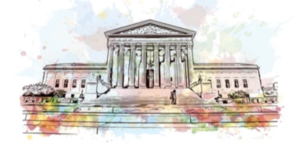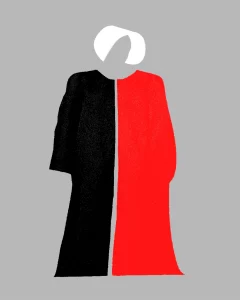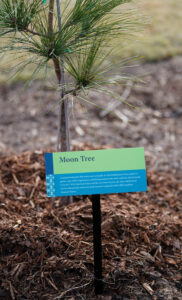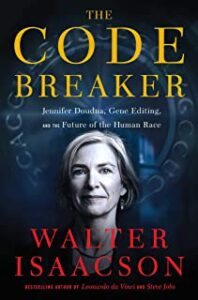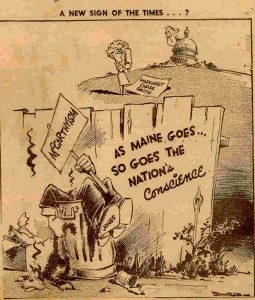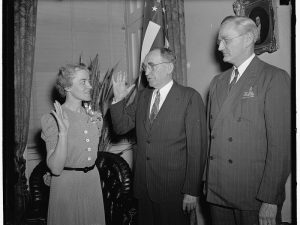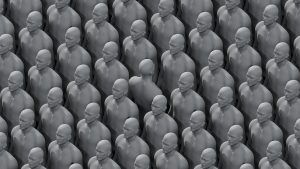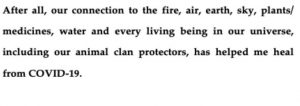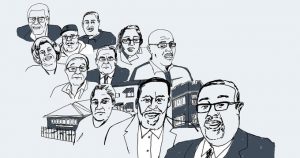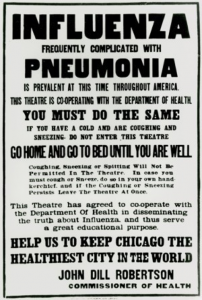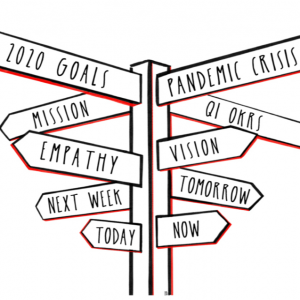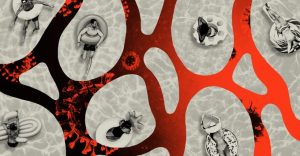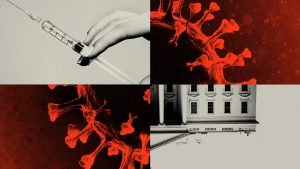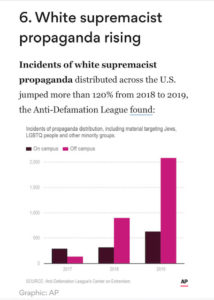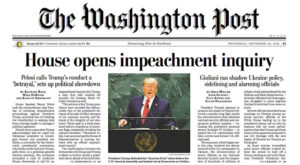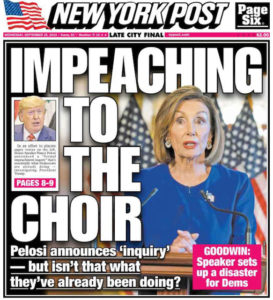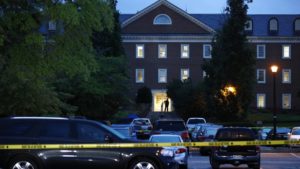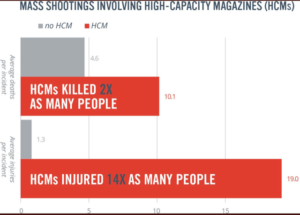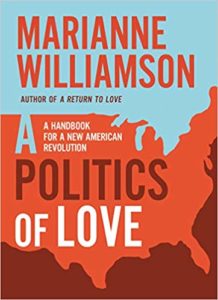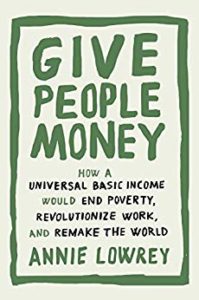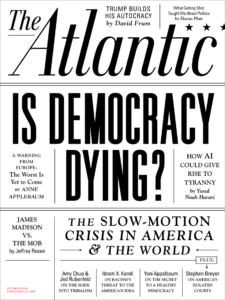The Atlantic
Cat.
May 31, 2022‘Peace be on them. Peace be on you.’
ღ
https://twitter.com/YusufCatStevens/status/1529867790408114177?s=20&t=D1EqYjAaR89teQYgzWEypw
‘Go in peace.’ -Abraham Lincoln
‘How peaceful do you feel right now? Our nerves, our home and our country crave peace.’ -A. Stoddard
‘What kind of courage is required of us? ~ This is, in the end, the only kind of courage that is required of us: the courage to meet the strangest, most awesome, and most inexplicable of phenomena.’ -Rilke, 1904
And act.
 %
%
The Atlantic
[Posted today, May 31, 2022]
‘Our writer argues that students should not return to school in the fall until Congress passes new gun-control laws.’
#BoycottSchools
#GunReformNow
#AssaultWeaponsBan
by Gal Beckerman
‘The argument that we’ve been here before, that the gun lobby has a generation of politicians in its pocket, that our political system, and particularly the structure of the Senate, will always give outsize influence to Second Amendment absolutists—all of it is true. And yet, as awful as it is to say, we’re learning with every killing. We’re moving closer to the kind of movement that might actually make a difference.
Today, I’m left with one conclusion: The children and parents of our country need to take the summer to organize locally, build a set of national demands, and then refuse to go back to school in the fall until Congress does something.
Let me explain. Social movements need two elements to be successful: narrative and tactics. Borrowing from the political scientist Joseph Nye, we might think of these as soft power and hard power, respectively. Activists need to tell a compelling story that brings people along to a new way of thinking and emboldens them to act. But that isn’t enough. There is also the hard work of mustering actual political power to elect different representatives, change laws, and leverage lobbying.
When it comes to narrative, those whose lives are most at risk in mass shootings make for the best storytellers. This has been a strangely hard-won realization. Dave Cullen, who covered the Columbine shooting in 1999 and later wrote a book about it, has said that in the days and even weeks after the attack, none of the survivors wanted to talk about gun control. Though a common right-wing talking point is that speaking about new regulations immediately after a shooting is “politicizing” the tragedy, few people pay this much heed anymore. “Everybody keeps telling us that it’s not the time to be political,” Kimberly Rubio toldThe New York Times, two days after her daughter was killed in Uvalde, Texas. “But it is. It is.”
Full piece:
‘…on a moral basis.’
May 16, 2022P U C K
The Real Tragedy of Samuel Alito’s Logic
by, BARATUNDE THURSTON
“Yet this leaked Supreme Court ruling would steal that decision away from pregnant women and instead encourage a policy of forced birth in a society that does not value the lives of those being birthed—or those doing the birthing. This decision empowers those invested only in the creation of life, not the quality of life. If we cared about quality of life for the living, we would offer up more than “’houghts and prayers’ in response to our record levels of life-ending gun violence. We would move heaven and earth to reverse the life-ending effects of the climate crisis. But we aren’t regulating gun manufacturers or carbon-spewing industries. Instead, we’re choosing to use our finite resources to regulate women…”
[…]
“We need to acknowledge that this issue is not simple and that morality and legality are different things. From my reading of the Pew Research, even those strongly opposed to abortion on a moral basis don’t believe it should be illegal in most cases. I know women who’ve had abortions, and I can attest to the seriousness with which they’ve made that decision. It’s not fun. It’s emotional and difficult and painful, but it’s also something they deemed necessary. Most people don’t want to be in a position to have to choose an abortion.
For some women in, abortion is the only way to save their lives, and the new wave of incoming restrictions will bring new stresses and new threats. As a friend of mine and mother of three recently told me, ‘Suddenly planning for my children’s future is not about saving for college—it’s finding ways to protect them from being thrown in jail for having a miscarriage.’ We should not criminalize women or further isolate them. We need to trust women and close that gap between the practice and promise of this country on our path to liberty and justice for all. I think we can. I believe we must. I know it will be hard.”
[Full Piece]
I INVENTED GILEAD. THE SUPREME COURT IS MAKING IT REAL.
I thought I was writing fiction in The Handmaid’s Tale.
T H I S:
It ought to be simple: If you believe in “ensoulment” at conception, you should not get an abortion, because to do so is a sin within your religion. If you do not so believe, you should not—under the Constitution—be bound by the religious beliefs of others. But should the Alito opinion become the newly settled law, the United States looks to be well on the way to establishing a state religion. Massachusetts had an official religion in the 17th century. In adherence to it, the Puritans hanged Quakers. The Alito opinion purports to be based on America’s Constitution. But it relies on English jurisprudence from the 17th century, a time when a belief in witchcraft caused the death of many innocent people. The Salem witchcraft trials were trials—they had judges and juries—but they accepted “spectral evidence,” in the belief that a witch could send her double, or specter, out into the world to do mischief. Thus, if you were sound asleep in bed, with many witnesses, but someone reported you supposedly doing sinister things to a cow several miles away, you were guilty of witchcraft. You had no way of proving otherwise. Similarly, it will be very difficult to disprove a false accusation of abortion. The mere fact of a miscarriage, or a claim by a disgruntled former partner, will easily brand you a murderer. Revenge and spite charges will proliferate, as did arraignments for witchcraft 500 years ago. If Justice Alito wants you to be governed by the laws of the 17th century, you should take a close look at that century. Is that when you want to live? https://www.theatlantic.com/ideas/archive/2022/05/supreme-court-roe-handmaids-tale-abortion-margaret-atwood/629833/?utm_source=newsletter&utm_medium=email&utm_campaign=atlantic-weekly-newsletter&utm_content=20220515&silverid=%25%25RECIPIENT_ID%25%25&utm_term=This%20Week%20on%20TheAtlanticcomMoon Trees 
February 2, 2022
We Almost Forgot About the Moon Trees
A collection of tree seeds that went round and round the moon was scattered far and wide back home.
By Marina Koren
Apollo 14—the third of six moon landings—is known, as I recently discovered, for its “moon trees.”
Stuart Roosa, one of the Apollo 14 astronauts, took a small canvas bag of tree seeds with him on the journey. While his fellow astronauts walked on the lunar surface, Roosa and the seeds flew round and round the moon until the crew was ready to come back. A few years after the astronauts returned home, some of the seeds—sycamores, redwoods, pines, firs, and sweetgums—were planted across the United States, to see how they would grow, or simply to keep a piece of moon history close by.
That I could find a database of these trees, and go through the experience of identifying and losing the moon tree nearest me in five seconds, is because of Dave Williams, a planetary scientist at NASA’s Goddard Space Flight Center, who 25 years ago took it upon himself to locate as many of them as he could. NASA didn’t keep any records on where the seeds from Apollo 14 ended up, nor did the agency keep up with the trees they became. But Williams does, even though it’s not part of his job description. He is not a tree expert, but he has become, through his efforts, the world’s foremost—and perhaps only—expert on moon trees.
(It was) discovered that the head of the U.S. Forest Service had pitched Roosa, a former smoke jumper who fought forest fires, on the idea. The astronaut took about 500 seeds stuffed in sealed bags inside a metal canister, packed in the small canvas bag that every Apollo astronaut was allowed to fill with whatever they wanted. When the astronauts came back, the sealed bags went through a vacuum chamber—part of the standard decontamination protocol at the time—and accidentally burst, scattering the seeds. Stan Krugman, a geneticist at the forest service, sorted them by hand, then passed them on to a scientist who used some to experiment with germination at NASA’s Johnson Space Center, in Houston. The rest were sent to forestry-science facilities, which doled them out to communities across the country, grateful for a free piece of the Apollo era to spice up their municipal grounds.
The trees, planted mostly in 1976, took root just fine on Earth. Some of the moon seeds were planted next to seeds that had never traveled to space, to see whether they’d develop any differently. The most surprising result, Williams told me, occurred when the two seeds grew into two completely different species—a result of a gardening mixup, of course, not the weird effects of microgravity. NASA didn’t undertake any serious study of the moon trees. The effort was more a PR move, Williams said, than a science experiment.
All the trinkets and tchotchkes that the Apollo astronauts took with them in their personal canvas bags are cool for this reason, bestowed with a magical sheen the second they were returned to Earth—space souvenirs. But the seeds that Roosa, who died in 1994, carried feel different from other mementos. They weren’t put in museums or auctioned off. They were buried in the soil of the Earth, the only soil like it in the solar system—in the entire universe, as far as we know. Some might have disappeared, felled by storms or saws, before someone could find them and feel curious enough to ask NASA about them. But the ones that remain are living monuments to the time humankind escaped this world’s gravity and felt that of another.’
From nasa.gov:
S C I E N C E 
March 22, 2021 Scientific breakthroughs are exhilarating and in recognition of brilliant minds joining with the collective spirit to benefit all species. Let’s do this! And with open minds and hearts for the common good.
Highly recommend Walter Isaacson’s latest book, Code Breaker. (Mind boggling the body of work, depth, research and writing Isaacson continues to share.)
This book illustrates clearly the symmetry of knowledge and research made manifest in the discoveries of CRISPR.
Also, the documentary film ‘Human Nature’ streaming on Netflix is a wonderful precursor for Isaacson’s book, produced by journalist Dan Rather.
This important read from The Atlantic dropped on the 19th gives understanding to COVID, vaccinations and the increasing variants in relation to the vaccine and what scientists are working on now.
THE ATLANTIC
SCIENCE
KATHERINE J. WU
Don’t Be Surprised When Vaccinated People Get Infected
Post-immunization cases, sometimes called “breakthroughs,” are very rare and very expected.
“Breakthrough infections, which occur when fully vaccinated people are infected by the pathogen that their shots were designed to protect against, are an entirely expected part of any vaccination process. They’re the data points that keep vaccines from reaching 100 percent efficacy in trials; they’re simple proof that no inoculation is a perfect preventative. And so far, the ones found after COVID-19 vaccination seem to be unextraordinary.
When breakthrough cases do arise, it’s not always clear why. The trio of vaccines now circulating in the United States were all designed around the original coronavirus variant, and seem to be a bit less effective against some newer versions of the virus. These troublesome variants have yet to render any of our current vaccines obsolete. But “the more variants there are, the more concern you have for breakthrough cases,” Saad Omer, a vaccine expert at Yale, told me. The circumstances of exposure to any version of the coronavirus will also make a difference. If vaccinated people are spending time with groups of unvaccinated people in places where the virus is running rampant, that still raises their chance of getting sick. Large doses of the virus can overwhelm the sturdiest of immune defenses, if given the chance.
The human side of the equation matters, too. Immunity is not a monolith, and the degree of defense roused by an infection or a vaccine will differ from person to person, even between identical twins. Some people might have underlying conditions that hamstring their immune system’s response to vaccination; others might simply, by chance, churn out fewer or less potent antibodies and T cells that can nip a coronavirus infection in the bud.”
Bottom line: the more folks who are vaccinated the less chance the variants continue to mutate off of each other. We need, at the very least, a base line of vaccinations. This isn’t political, or scary, it’s science.
As of March 19th, 40 million American’s have received full vaccinations. [The Atlantic]
The new 4th Estate?
January 12, 2021The 4th Estate refers to a Free Press in the United States, or the ‘4th Branch of Government.’ This morning the AXIOS online news organization, for-profit media, reference corporate America as the new ‘4th Estate’:
‘How CEO’s became the 4th Branch of Government’
America needs law and order — but not the kind President Trump has in mind. That’s the message being sent by a broad coalition of CEOs who are silencing Trump and punishing his acolytes in Congress, Axios’ Felix Salmon writes.
- Why it matters: CEOs managed to act as a faster and more effective check on the power of the president than Congress could. They have money, they have power, and they have more of the public’s trust than politicians do. And they’re using all of it to try to preserve America’s system of governance.
A new political force is emerging — one based on centrist principles of predictability, stability, small-c conservatism and, yes, the rule of law.
- “You cannot call for violence,” Facebook COO Sheryl Sandberg said yesterday in an interview with Reuters Next, explaining why she de-platformed Trump. “[T]he risk to our democracy was too big. We felt that we had to take the unprecedented step of an indefinite ban, and I’m glad that we did.” [FACEBOOK CONTINUES TO BE COMPLICIT. TEXTBOOK DEFINITION OF GASLIGHTING. Facebook is a sponsor of AXIOS. -dayle]
Between the lines: American capitalism is based on a foundation of legal contracts, all of which ultimately rely on the strength and stability of the government.
- When a sitting president threatens that stability by inciting an insurrectionist mob that storms the legislature, corporate America will do everything in its power to restrain him.
Driving the news: Tech giants including Facebook, Google, Amazon and Twitter have worked in concert to quiet Trump and the far right. Other corporations are pulling political funding from all legislators who supported overturning the result of November’s free and fair election.
- All of this has happened before the House can even schedule an impeachment vote.
The backstory: Axios first told you about CEOs as America’s new politicians in 2019, when they increasingly were responding to pressure.
- Then corporate leaders mobilized last spring on coronavirus response, last summer over racial justice, and now they are joining ranks on climate change.
What’s next: After dipping toes in for the past year and a half, CEOs are now all-in.
- They’re in a whole new league of activism — with no going back.
Remember, GOP leaders, today, announcing their agreement for impeachment are also reacting to corporate media saying their funding, donations, are suspended. It’s money, it’s power, it’s greed—those are their motivations. Always. -dayle
The virus of lies.
We have to describe things as they are. What really happened on that terrible day? “The president of the United States incited a mob to sack the Capitol to lynch the vice president — his vice president.” -Jeffrey Goldberg, The Atlantic
Center for Action & Contemplation:
‘If our framing story tells us that we are in life-and-death competition with each other, then we will have little reason to seek reconciliation and collaboration and nonviolent resolutions to our conflicts.’
NPR:
‘How do I help people that have, unbeknownst to them, become radicalized in their thought? Unless we help them break the deception, we cannot operate with 30% of the country holding the extreme views that they do.’
CJR/Columbia Journalism Review:
‘In 2016, DT got so much free media airtime—more than $2(B) according to the the NYTimes—that he could run a national presidential campaign with a fraction of the ad budget of his competitors; amplifying him has not merely been a Fox News problem.’
Tim Snyder:
‘The lie outlasts the liar. The idea that Germany lost the First World War in 1918 because of a Jewish “stab in the back” was 15 years old when Hitler came to power. How will DT’s myth of victimhood function in American life 15 years from now? And to whose benefit?’
For-profit media has made millions…billions?…from Donald Trump. Mainstream media, the fringes of cable news, all, all, gave DT platforms for disinformation and incited his rhetoric. No Doubt. This could, indeed, have made room for corporate America’s position as the 4th Estate [AXIOS].
I remember, what Don Lemon, CNN, and what so many pundits on news media said in 2015: “People want to see Donald Trump. You want to watch him,” Don Lemon told CNN viewers the day after Trump announced his candidacy. “At least there’s someone interesting in the race.”
NYTimes:
‘At Fox, one former staffer said, the main criterion for choosing a story is whether it will inflame the audience: “The single phrase they said over and over was ‘This is going to outrage the viewers!’ You inflame the viewers so that no one will turn away.”’
CJR/Columbia Journalist Review
From journalist Maria Bustillos:
Media, too Must be held Accountable. [ALL MEDIA]
‘Real accountability, for MSNBC, means a clear and distinct demand for each of its hosts to come clean about his or her own complicity in building and enabling the increasingly violent and extremist Republican Party that led, inexorably, to the ruinous Trump administration. Joe Scarborough, for example, who on Thursday called for the president to be arrested, was not so long ago a frequent guest at Mar-a-Lago, and a staunch ally of Trump the candidate in 2016, as CNN reported at the time:
Scarborough has spoken about Trump in increasingly glowing terms, praising him as “a masterful politician” and defending him against his political opponents and media critics. The Washington Post has noted that Trump has received “a tremendous degree of warmth from the [Scarborough] show,” and [said] that his appearances on the show, in person and over the phone, often feel like “a cozy social club.”
True to form, Chuck Todd brought the most openly cynical and dim-witted take to the party. On Meet the Press Thursday, he spoke with Andrea Mitchell and Katy Tur about the possible motivations of Elaine Chao, Trump’s transportation secretary, who had announced her resignation. “I’m sort of torn on the effectiveness,” he began.
But let’s put yourself… I’m going to try to put myself in her shoes. And maybe you don’t have enough people to do the Twenty-fifth Amendment.… And you want to stand up, and do something, and say something.… But at the end of the day, is it still better symbolically to publicly rebuke him, even if it’s in the last thirteen days, even if it does look like you’re trying to launder yourself a bit, so that maybe you’ll be invited to a better law firm or a better cocktail party, but the rebuke may be still necessary anyway?
I have nothing whatsoever to add to that.’
Watching from the other side.
October 31, 2020‘It is coming into election week in the U.S. I am here, on this side of the Atlantic, looking at the other side of that ocean. So much has happened in the sea between us: ships shipping enslaved people, hungry people, desperate people; ships going to a land they called uninhabited from a Europe that prefers to forget its history. As I think about how reparations and justice can be enacted, I’m reminded of an old Breton prayer: God help me, because the sea is so big and my boat is so small.’

Beir bua,
Pádraig Ó Tuama
[Beir bua: ‘take a victory, and a blessing.’]
Pádraig Ó Tuama is leader of the Corrymeela Community, a poet, theologian and mediator. He has worked in conflict resolution in Ireland, Africa and the Middle East.
Happening in real time, right in front of us.
June 2, 2020My mind continues to circle back to how many lives have been sacrificed, modern day lynching, before the advent of video and smart phones.
There are 18,000 law enforcement agencies in this country, racism, systemic. How will this be changed?
Our country is rudderless, void of moral leadership. We are a mess.
-dayle
Words from modern history, the voice of Senator Margaret Chase Smith, (R) Maine.
As Senator Margaret Chase Smith of Maine boarded the Senate subway, she encountered the junior senator from Wisconsin, Joe McCarthy. “Margaret, you look very serious,” he said. “Are you going to make a speech?” Without hesitation, Smith replied: “Yes, and you will not like it.” -Senate Historian Office
The Bulwark:
‘This speech, delivered almost a year and a half after she came to the Senate, was Smith’s first speech on the Senate floor. She was no neophyte as a legislator; she had served in the House for nearly a decade before her election to the Senate in 1948—which made her, incidentally, the first woman to serve in both houses of Congress. But by tradition, new senators did not speak on the floor until, after many months of waiting, they gave their “maiden speeches.”
McCarthy, of course, is today remembered as a Senate bully who abused his power in his efforts to investigate Communists—real and alleged—and drag them before the world’s greatest deliberative body to answer for their sins. He was still just getting started by this point in 1950; he gave his first famous speech, the one in which he waved a list of 205 supposed Communists in the State Department, earlier that year. Over the next four years, he would be one of the dominant figures in the Red Scare before his eventual disgrace.’
-Jim Swift is a senior editor at The Bulwark.
Margaret Chase Smith became the first woman ever to serve in both the House of Representatives and the Senate—and the first senator to stand up against Joseph McCarthy’s Red Scare. (Library of Congress)
Sen. Smith’s speech, June 1st, 1950.
Declaration of Conscience
Mr. President, I would like to speak briefly and simply about a serious national condition. It is a national feeling of fear and frustration that could result in national suicide and the end of everything that we Americans hold dear. It is a condition that comes from the lack of effective leadership either in the legislative branch or the executive branch of our government.
Those of us who shout the loudest about Americanism in making character assassinations are all too frequently those who, by our own words and acts, ignore some of the basic principles of Americanism.
The right to criticize.
The right to hold unpopular beliefs.
The right to protest.
The right of independent thought.
The exercise of these rights should not cost one single American citizen his reputation or his right to a livelihood nor should he be in danger of losing his reputation or livelihood merely because he happens to know someone who holds unpopular beliefs.
Today our country is being psychologically divided by the confusion and the suspicions that are bred in the United States Senate to spread like cancerous tentacles of “know nothing, suspect everything” attitudes.
1. We are Republicans. But we are Americans first. It is as Americans that we express our concern with the growing confusion that threatens the security and stability of our country. Democrats and Republicans alike have contributed to that confusion.
2. The Democratic administration has initially created the confusion by its lack of effective leadership, by its contradictory grave warnings and optimistic assurances, by its complacency to the threat of communism here at home, by its oversensitiveness to rightful criticism, by its petty bitterness against its critics.
3. Certain elements of the Republican party have materially added to this confusion in the hopes of riding the Republican party to victory through the selfish political exploitation of fear, bigotry, ignorance, and intolerance. There are enough mistakes of the Democrats for Republicans to criticize constructively without resorting to political smears.
4. To this extent, Democrats and Republicans alike have unwittingly, but undeniably, played directly into the Communist design of “confuse, divide, and conquer.”
5. It is high time that we stopped thinking politically as Republicans and Democrats about elections and started thinking patriotically as Americans about national security based on individual freedom. It is high time that we all stopped being tools and victims of totalitarian techniques—techniques that, if continued here unchecked, will surely end what we have come to cherish as the American way of life.
–
Full speech:
https://www.senate.gov/artandhistory/history/resources/pdf/SmithDeclaration.pdf
Juxtapose Sen. Smith’s words with Anne Applebaum’s The Atlantic piece.
Early release from The July/August issue of The Atlantic.
ANNE APPLEBAUM is a staff writer at The Atlantic and a senior fellow of the Agora Institute at Johns Hopkins University. She is the author of Red Famine: Stalin’s War on Ukraine and Twilight of Democracy: The Seductive Lure of Authoritarianism.
History Will Judge the Complicit
Why have Republican leaders abandoned their principles in support of an immoral and dangerous president?
Both men could see the gap between propaganda and reality. Yet one remained an enthusiastic collaborator while the other could not bear the betrayal of his ideals. Why?
in english, the word collaborator has a double meaning. A colleague can be described as a collaborator in a neutral or positive sense. But the other definition of collaborator, relevant here, is different: someone who works with the enemy, with the occupying power, with the dictatorial regime. In this negative sense, collaborator is closely related to another set of words: collusion, complicity, connivance. This negative meaning gained currency during the Second World War, when it was widely used to describe Europeans who cooperated with Nazi occupiers. At base, the ugly meaning of collaborator carries an implication of treason: betrayal of one’s nation, of one’s ideology, of one’s morality, of one’s values.
Since the Second World War, historians and political scientists have tried to explain why some people in extreme circumstances become collaborators and others do not. The late Harvard scholar Stanley Hoffmann had firsthand knowledge of the subject—as a child, he and his mother hid from the Nazis in Lamalou-les-Bains, a village in the south of France. But he was modest about his own conclusions, noting that “a careful historian would have—almost—to write a huge series of case histories; for there seem to have been almost as many collaborationisms as there were proponents or practitioners of collaboration.” Still, Hoffmann made a stab at classification, beginning with a division of collaborators into “voluntary” and “involuntary.” Many people in the latter group had no choice. Forced into a “reluctant recognition of necessity,” they could not avoid dealing with the Nazi occupiers who were running their country.
[…]
We all feel the urge to conform; it is the most normal of human desires. I was reminded of this recently when I visited Marianne Birthler in her light-filled apartment in Berlin. During the 1980s, Birthler was one of a very small number of active dissidents in East Germany; later, in reunified Germany, she spent more than a decade running the Stasi archive, the collection of former East German secret-police files. I asked her whether she could identify among her cohort a set of circumstances that had inclined some people to collaborate with the Stasi.
She was put off by the question. Collaboration wasn’t interesting, Birthler told me. Almost everyone was a collaborator; 99 percent of East Germans collaborated. If they weren’t working with the Stasi, then they were working with the party, or with the system more generally. Much more interesting—and far harder to explain—was the genuinely mysterious question of “why people went against the regime.” The puzzle is not why Markus Wolf remained in East Germany, in other words, but why Wolfgang Leonhard did not.
here is another pair of stories, one that will be more familiar to American readers. Let’s begin this one in the 1980s, when a young Lindsey Graham first served with the Judge Advocate General’s Corps—the military legal service—in the U.S. Air Force…
Full article:
https://www.theatlantic.com/magazine/archive/2020/07/trumps-collaborators/612250/
It takes time to persuade people to abandon their existing value systems. The process usually begins slowly, with small changes.
Republican leaders don’t seem to know that similar waves of fear have helped transform other democracies into dictatorships.
COVID COMPASSION
May 9, 2020As individuals and communities, we can respond with justice and compassion, or we can double down on the pursuit of accumulation and power, with no more than a return to business as usual.
-Father Richard Rohr
Center for Action & Contemplation
‘The pandemic has severely attacked vulnerable communities of color, including tribal communities whose members may not have access to adequate health care nor clean water, we turn to a young voice from the Navajo Nation.’
[Desperado Philosophy]
Aware that the pandemic has severely attacked vulnerable communities of color, including tribal communities whose members may not have access to adequate health care nor clean water, we turn to a young voice from the Navajo Nation (Diné), Alastair Lee Bitsóí, relayed from the pages of the Navajo Times. Excerpts below, with images from the studio of Tony Abeyta.
https://desperadophilosophy.net/2020/05/09/nature-in-control/amp/?__twitter_impression=true
[Investigative, compassionate journalism. -dayle]
‘Life expectancy gap between black & white Chicagoans, largest in the country: Structural racism, concentrated poverty, economic exploitation & chronic stress cause what’s known as biological weathering.’
ProPublica
ProPublica is an independent, non-profit newsroom that produces investigative journalism in the public interest. THE FIRST 100 COVID-19 Took Black Lives First. It Didn't Have To.
“We’re not going to reverse this in a moment, overnight, but we have to say it for what it is and move forward decisively as a city, and that’s what we will do,” she said. “This is about health care accessibility, life expectancy, joblessness and hunger.”
ProPublica’s reporting also revealed other patterns, factors that could — and should — have been addressed and which almost certainly exist in other communities experiencing similar disparities. Even though many of these victims had medical conditions that made them particularly susceptible to the virus, they didn’t always get clear or appropriate guidance about seeking treatment. They lived near hospitals that they didn’t trust and that weren’t adequately prepared to treat COVID-19 cases. And perhaps most poignantly, the social connections that gave their lives richness and meaning — and that played a vital role in helping them to navigate this segregated city that can at times feel hostile to black residents — made them more likely to be exposed to the virus before its deadly power became apparent.
The city [Chicago] announced the Racial Equity Rapid Response Team in partnership with West Side United, with a goal to “bring a hyper local public health strategy to targeted communities.” In the weeks since, the team has held tele-town halls, delivered thousands of door hangers and postcards with targeted information, and distributed 60,000 masks for residents in the predominantly black communities of Austin, Auburn Gresham and South Shore.
https://features.propublica.org/chicago-first-deaths/covid-coronavirus-took-black-lives-first/
So much new & good is going to come from this. We can stop deluding ourselves that our current way of organizing our society is either sane or even survivable! That had to come first in order to rock us to our core, to humble us. Now we’ll be open to new ideas in a whole new way.
-Marianne Williamson
A poster from 1918 asks Chicagoans to self-quarantine if they have symptoms of the flu. For more, see “Don’t Spit! Pandemic Posters Through the Years.” (Courtesy National Library of Medicine)
The Atlantic
Disaster Studies
Pandemics Leave Us Forever Altered
by Charles C. Mann
What history can tell us about the long-term effects of the coronavirus
Just a few decades after the pandemic, American-history textbooks by the distinguished likes of Arthur M. Schlesinger Jr., Richard Hofstadter, Henry Steele Commager, and Samuel Eliot Morison said not a word about it. The first history of the 1918 flu wasn’t published until 1976—I drew some of the above from it. Written by the late Alfred W. Crosby, the book is called America’s Forgotten Pandemic.
Americans may have forgotten the 1918 pandemic, but it did not forget them. Garthwaite matched NHIS respondents’ health conditions to the dates when their mothers were probably exposed to the flu. Mothers who got sick in the first months of pregnancy, he discovered, had babies who, 60 or 70 years later, were unusually likely to have diabetes; mothers afflicted at the end of pregnancy tended to bear children prone to kidney disease. The middle months were associated with heart disease.
Other studies showed different consequences. Children born during the pandemic grew into shorter, poorer, less educated adults with higher rates of physical disability than one would expect. Chances are that none of Garthwaite’s flu babies ever knew about the shadow the pandemic cast over their lives. But they were living testaments to a brutal truth: Pandemics—even forgotten ones—have long-term, powerful aftereffects.
[…]
The convulsive social changes of the 1920s—the frenzy of financial speculation, the resurgence of the Ku Klux Klan, the explosion of Dionysian popular culture (jazz, flappers, speakeasies)—were easily attributed to the war, an initiative directed and conducted by humans, rather than to the blind actions of microorganisms. But the microorganisms likely killed more people than the war did. And their effects weren’t confined to European battlefields, but spread across the globe, emptying city streets and filling cemeteries on six continents.
Unlike the war, the flu was incomprehensible—the influenza virus wasn’t even identified until 1931. It inspired fear of immigrants and foreigners, and anger toward the politicians who played down the virus. Like the war, influenza (and tuberculosis, which subsequently hit many flu sufferers) killed more men than women, skewing sex ratios for years afterward. Can one be sure that the ensuing, abrupt changes in gender roles had nothing to do with the virus?
[…]
To save themselves from the disease, scared Europeans sought favor from the heavens, most famously taking off their clothes in groups and striking one another with whips and sticks. Images of half-nude flagellants have, since Monty Python, become a comic staple. Far less comical was the accompanying flood of anti-Semitic violence. As it spread through Germany, Switzerland, France, Spain, and the Low Countries, it left behind a trail of beaten cadavers and burned homes.
Absent the diseases, it is difficult to imagine how small groups of poorly equipped Europeans at the end of very long supply chains could have survived and even thrived in the alien ecosystems of the Americas. “I fully support banning travel from Europe to prevent the spread of infectious disease,” the Cherokee journalist Rebecca Nagle remarked after President Trump announced his plan to do this. “I just think it’s 528 years too late.”
For Native Americans, the epidemic era lasted for centuries, as did its repercussions. Isolated Hawaii had almost no bacterial or viral disease until 1778, when the islands were “discovered” by Captain James Cook. Islanders learned the cruel facts of contagion so rapidly that by 1806, local leaders were refusing to allow European ships to dock if they had sick people on board. Nonetheless, Hawaii’s king and queen traveled from their clean islands to London, that cesspool of disease, arriving in May 1824. By July they were dead—measles.
Later it occurred to me that a possible legacy of Hong Kong’s success with SARS is that its citizens seem to put more faith in collective action than they used to. I’ve met plenty of people there who believe that the members of their community can work together for the greater good—as they did in suppressing SARS and will, with luck, keep doing with COVID-19. It’s probably naive of me to hope that successfully containing the coronavirus would impart some of the same faith in the United States, but I do anyway.
https://www.theatlantic.com/magazine/archive/2020/06/pandemics-plagues-history/610558/
“Hope with realism.”
April 14, 2020Help us become a community that vulnerably shares each other’s burdens and the weight of glory. Listen to our hearts’ longings for the healing of our world.
Right now, it seems the whole world is in the belly of the beast together. But we are also safely held in the loving hands of [Love], even if we do not yet fully realize it.
All of us experience the absurd, the tragic, the nonsensical, the unjust, but we do not all experience pain in the same way, so try not to judge others too harshly for their reactions. We don’t know what has brought them to this point.
[Life] uses tragedy, suffering, pain, betrayal, and death itself, not to wound or punish us, but to bring us to a Larger Identity: “Unless the single grain of wheat loses its shell, it remains just a single grain” (see John 12:24). The shell must first crack for the expanded growth to happen. In such a divine economy, everything can be transmuted, everything can be used, and nothing is wasted.
-Fr Richard Rohr
#MustRead
Our Pandemic Summer
by Ed Yong
‘The fight against the coronavirus won’t be over when the U.S. reopens. Here’s how the nation must prepare itself.
When restrictions relax, as they are set to do on April 30, the coronavirus will likely surge back, as it is now doing in Singapore, China, Hong Kong, Taiwan, and other Asian states that had briefly restrained it.
[From FOX NEWS contributor Bill Bennett and former Education Secretary in Ronald Reagan’s administration: ““61,000 is what we lost to the flu in 2017 and 2018,” Bennett declared. “The flu. Now, we all regret the loss of 61,000 people, if that’s what it turns out to be. I’m going to tell you I think it’s going to be less.”
“But if you look at those numbers and see the comparable, we’re going to have fewer fatalities from this than from the flu,” he added.]
What will May bring? Or June? What happens as this seemingly interminable spring rolls into a precarious summer? When will things go back to normal?
The options are limited. Early inaction left the U.S. with too many new cases, and just one recourse: Press a societal pause button to buy enough time for beleaguered hospitals to steel themselves for a sharp influx in patients. This physical-distancing strategy is working, but at such an economic cost that it can’t be sustained indefinitely. When restrictions relax, as they are set to do on April 30, the coronavirus will likely surge back, as it is now doing in Singapore, China, Hong Kong, Taiwan, and other Asian states that had briefly restrained it.
I’m reminded of images from World War II as people in London walked to work, briefcases in hand, against a backdrop of bombed-out buildings. I think we are in store for a similar period in history, as we learn to make greater peace with the world’s chaos and our own mortality.’
Endarkment
March 27, 2020“One does not become enlightened by imagining figures of light,” Carl Jung wrote, “but by making the darkness conscious.” Reading this, I realize that in a whole lifetime spent with seekers of enlightenment, I have never once heard anyone speak in hushed tones about the value of endarkenment. -Barbara Taylor Brown, author & Episcopal priest
And so even now, as light gives way to darkness, I know that once again light is born from darkness. Those who read out to help strangers are living out the oneness that is part of our spiritual DNA. -Science of Mind
What are we only now coming “to know” through this time of not-knowing?
Either we will love and help one another or we will hate and attack one another, in which latter case we will all be one another’s hell. Perhaps Sartre was not far wrong in saying that where freedom is abused, society itself turns into heel.. (L’enfer c’est les autres.”) -Thomas Merton
Yuval Noah Harari: the world after coronavirus
This storm will pass. But the choices we make now could change our lives for years to come.
Humankind is now facing a global crisis. Perhaps the biggest crisis of our generation. The decisions people and governments take in the next few weeks will probably shape the world for years to come. They will shape not just our healthcare systems but also our economy, politics and culture. We must act quickly and decisively. We should also take into account the long-term consequences of our actions. When choosing between alternatives, we should ask ourselves not only how to overcome the immediate threat, but also what kind of world we will inhabit once the storm passes. Yes, the storm will pass, humankind will survive, most of us will still be alive — but we will inhabit a different world.
Many short-term emergency measures will become a fixture of life. That is the nature of emergencies. They fast-forward historical processes. Decisions that in normal times could take years of deliberation are passed in a matter of hours. Immature and even dangerous technologies are pressed into service, because the risks of doing nothing are bigger. Entire countries serve as guinea-pigs in large-scale social experiments. What happens when everybody works from home and communicates only at a distance? What happens when entire schools and universities go online? In normal times, governments, businesses and educational boards would never agree to conduct such experiments. But these aren’t normal times.
The coronavirus epidemic is thus a major test of citizenship. In the days ahead, each one of us should choose to trust scientific data and healthcare experts over unfounded conspiracy theories and self-serving politicians. If we fail to make the right choice, we might find ourselves signing away our most precious freedoms, thinking that this is the only way to safeguard our health.
[full read]
https://www.ft.com/content/19d90308-6858-11ea-a3c9-1fe6fedcca75
How the Pandemic Will End
The U.S. may end up with the worst COVID-19 outbreak in the industrialized world. This is how it’s going to play out.
Story by Ed Yong
The testing fiasco was the original sin of America’s pandemic failure, the single flaw that undermined every other countermeasure. If the country could have accurately tracked the spread of the virus, hospitals could have executed their pandemic plans, girding themselves by allocating treatment rooms, ordering extra supplies, tagging in personnel, or assigning specific facilities to deal with COVID-19 cases. None of that happened. Instead, a health-care system that already runs close to full capacity, and that was already challenged by a severe flu season, was suddenly faced with a virus that had been left to spread, untracked, through communities around the country. Overstretched hospitals became overwhelmed. Basic protective equipment, such as masks, gowns, and gloves, began to run out. Beds will soon follow, as will the ventilators that provide oxygen to patients whose lungs are besieged by the virus.
The White House is a ghost town of scientific expertise. A pandemic-preparedness office that was part of the National Security Council was dissolved in 2018. On January 28, Luciana Borio, who was part of that team, urged the government to “act now to prevent an American epidemic,” and specifically to work with the private sector to develop fast, easy diagnostic tests. But with the office shuttered, those warnings were published in The Wall Street Journal, rather than spoken into the president’s ear. Instead of springing into action, America sat idle.
After 9/11, the world focused on counterterrorism. After COVID-19, attention may shift to public health. Expect to see a spike in funding for virology and vaccinology, a surge in students applying to public-health programs, and more domestic production of medical supplies. Expect pandemics to top the agenda at the United Nations General Assembly. Anthony Fauci is now a household name. “Regular people who think easily about what a policewoman or firefighter does finally get what an epidemiologist does,” says Monica Schoch-Spana, a medical anthropologist at the Johns Hopkins Center for Health Security.
The lessons that America draws from this experience are hard to predict, especially at a time when online algorithms and partisan broadcasters only serve news that aligns with their audience’s preconceptions. Such dynamics will be pivotal in the coming months, says Ilan Goldenberg, a foreign-policy expert at the Center for a New American Security. “The transitions after World War II or 9/11 were not about a bunch of new ideas,” he says. “The ideas are out there, but the debates will be more acute over the next few months because of the fluidity of the moment and willingness of the American public to accept big, massive changes.”
[full read]
https://www.theatlantic.com/health/archive/2020/03/how-will-coronavirus-end/608719/
7 Resources for Reliable Information About Coronavirus
1. The World Health Organization
The World Health Organization (WHO) is publishing rolling updates on the coronavirus situation as well as useful infographics and explainers, and should be your first port of call for new assessments of what is going on.
The WHO has also got a really handy page on common coronavirus myths — covering everything from whether eating garlic or taking a bath can help prevent you catching it (they can’t), to discussion about what age people are most susceptible.
2. The National Health Service
The UK’s NHS is another excellent resource. It includes easy to understand advice about symptoms, and what to do if you think you have them.
It also gives details of how and under which circumstances you need to self-isolate, and for how long, and on how to get a self-isolation medical advice note to get to your employer.
3. The BBC Coronavirus Podcast
The British Broadcasting Corporation (BBC) has launched a Coronavirus Global Update podcast, which includes a daily round-up on the spread of coronavirus.
It also includes reports from affected areas, details of the latest medical information, and the impact on health, business, and travel.
4. COVID-19 Facts
The COVID-19 Facts website works to collate information from sources including the London School of Hygiene and Tropical Medicine, the World Health Organization, and the Economist Intelligence Unit.
It also features a series covering myths around coronavirus, including analysis by the Economist Intelligence Unit of where the myth came from, and what experts say about it.
5. The New Scientist Podcast
The New Scientist podcast is becoming increasingly focused on COVID-19 — including episodes and pandemic preparations; the spread of COVID-19 and the importance of hand washing; the coronavirus vaccine; and a coronavirus special on disaster preparation and environmental change.
6. The Bill & Melinda Gates Foundation
The content platform of the Bill & Melinda Gates Foundation, the Optimist, is sharing stories, research, and news stories about coronavirus from the Foundation.
The platform works to convene expert voices from across the global health sector, including sharing expert perspectives and updates on the response to COVID-19 — and you can also sign up for the Optimist’s news digest.
7. The London School of Hygiene and Tropical Medicine
The LSHTM launched its new podcastLSHTM Viral in January 2020, in response to the outbreak of COVID-19, and is releasing a new episode every week. It specifically focuses on the science behind outbreaks and how we respond to them.
Meanwhile, the LSHTM is also launching an online short course, for those who want to better understand the emergence of COVID-19, and how we respond to it moving forward.
The free-of-charge course launches on March 23, and will cover topics like: how COVID-19 emerged and was identified; public health measures worldwide; and what’s needed to address COVID-19 in the future.
Given that everything is going to be the way it’s going to be, we’re left with an actually useful and productive question instead: “What are you going to do about it?”
-Seth Godin
Anticipatory grief.
Stocking up on compassion.
Name it.
That Discomfort You’re Feeling Is Grief
Harvard Business Review
Anticipatory grief is the mind going to the future and imagining the worst. To calm yourself, you want to come into the present.
Finally, it’s a good time to stock up on compassion. Everyone will have different levels of fear and grief and it manifests in different ways. A coworker got very snippy with me the other day and I thought, That’s not like this person; that’s how they’re dealing with this. I’m seeing their fear and anxiety. So be patient. Think about who someone usually is and not who they seem to be in this moment.
When you name it, you feel it and it moves through you. Emotions need motion. It’s important we acknowledge what we go through.
It’s absurd to think we shouldn’t feel grief right now. Let yourself feel the grief and keep going.
https://hbr.org/2020/03/that-discomfort-youre-feeling-is-grief
Cancel Everything
March 11, 2020The Atlantic
Social distancing is the only way to stop the coronavirus. We must start immediately.
The first fact is that, at least in the initial stages, documented cases of COVID-19 seem to increase in exponential fashion. On the 23rd of January, China’s Hubei province, which contains the city of Wuhan, had 444 confirmed COVID-19 cases. A week later, by the 30th of January, it had 4,903 cases. Another week later, by the 6th of February, it had 22,112.
The same story is now playing out in other countries around the world. Italy had 62 identified cases of COVID-19 on the 22nd of February. It had 888 cases by the 29th of February, and 4,636 by the 6th of March.
Because the United States has been extremely sluggish in testing patients for the coronavirus, the official tally of 604 likely represents a fraction of the real caseload. But even if we take this number at face value, it suggests that we should prepare to have up to 10 times as many cases a week from today, and up to 100 times as many cases two weeks from today.
The second fact is that this disease is deadlier than the flu, to which the honestly ill-informed and the wantonly irresponsible insist on comparing it. Early guesstimates, made before data were widely available, suggested that the fatality rate for the coronavirus might wind up being about 1 percent. If that guess proves true, the coronavirus is 10 times as deadly as the flu.
But there is reason to fear that the fatality rate could be much higher. According to the World Health Organization, the current case fatality rate—a common measure of what portion of confirmed patients die from a particular disease—stands at 3.4 percent. This figure could be an overstatement, because mild cases of the disease are less likely to be diagnosed. Or it could be an understatement, because many patients have already been diagnosed with the virus but have not yet recovered (and may still die).
When the coronavirus first spread to South Korea, many observers pointed to the comparatively low death rates in the country to justify undue optimism. In countries with highly developed medical systems, they claimed, a smaller portion of patients would die. But while more than half of all diagnosed patients in China have now been cured, most South Korean patients are still in the throes of the disease. Of the 7,478 confirmed cases, only 118 have recovered; the low death rate may yet rise.
Meanwhile, the news from Italy, another country with a highly developed medical system, has so far been shockingly bad. In the affluent region of Lombardy, for example, there have been 7,375 confirmed cases of the virus as of Sunday. Of these patients, 622 had recovered, 366 had died, and the majority were still sick. Even under the highly implausible assumption that all of the still-sick make a full recovery, this would suggest a case fatality rate of 5 percent—significantly higher, not lower, than in China.
The third fact is that so far only one measure has been effective against the coronavirus: extreme social distancing.
Before China canceled all public gatherings, asked most citizens to self-quarantine, and sealed off the most heavily affected region, the virus was spreading in exponential fashion. Once the government imposed social distancing, the number of new cases leveled off; now, at least according to official statistics, every day brings more news of existing patients who are healed than of patients who are newly infected.
A few other countries have taken energetic steps to increase social distancing before the epidemic reached devastating proportions. In Singapore, for example, the government quickly canceled public events and installed medical stations to measure the body temperature of passersby while private companies handed out free hand sanitizer. As a result, the number of cases has grown much more slowly than in nearby countries.
These three facts imply a simple conclusion. The coronavirus could spread with frightening rapidity, overburdening our health-care system and claiming lives, until we adopt serious forms of social distancing.
This suggests that anyone in a position of power or authority, instead of downplaying the dangers of the coronavirus, should ask people to stay away from public places, cancel big gatherings, and restrict most forms of nonessential travel.
Given that most forms of social distancing will be useless if sick people cannot get treated—or afford to stay away from work when they are sick—the federal government should also take some additional steps to improve public health. It should take on the costs of medical treatment for the coronavirus, grant paid sick leave to stricken workers, promise not to deport undocumented immigrants who seek medical help, and invest in a rapid expansion of ICU facilities.
The past days suggest that this administration is unlikely to do these things well or quickly (although the administration signaled on Monday that it will seek relief for hourly workers, among other measures). Hence, the responsibility for social distancing now falls on decision makers at every level of society.
Do you head a sports team? Play your games in front of an empty stadium.
Are you organizing a conference? Postpone it until the fall.
Do you run a business? Tell your employees to work from home.
Are you the principal of a school or the president of a university? Move classes online before your students get sick and infect their frail relatives.
Are you running a presidential campaign? Cancel all rallies right now.
All of these decisions have real costs. Shutting down public schools in New York City, for example, would deprive tens of thousands of kids of urgently needed school meals. But the job of institutions and authorities is to mitigate those costs as much as humanly possible, not to use them as an excuse to put the public at risk of a deadly communicable disease.
Finally, the most important responsibility falls on each of us. It’s hard to change our own behavior while the administration and the leaders of other important institutions send the social cue that we should go on as normal. But we must change our behavior anyway. If you feel even a little sick, for the love of your neighbor and everyone’s grandpa, do not go to work.
When the influenza epidemic of 1918 infected a quarter of the U.S. population, killing tens of millions of people, seemingly small choices made the difference between life and death.
As the disease was spreading, Wilmer Krusen, Philadelphia’s health commissioner, allowed a huge parade to take place on September 28; some 200,000 people marched. In the following days and weeks, the bodies piled up in the city’s morgues. By the end of the season, 12,000 residents had died.
In St. Louis, a public-health commissioner named Max Starkloff decided to shut the city down. Ignoring the objections of influential businessmen, he closed the city’s schools, bars, cinemas, and sporting events. Thanks to his bold and unpopular actions, the per capita fatality rate in St. Louis was half that of Philadelphia. (In total, roughly 1,700 people died from influenza in St Louis.)
In the coming days, thousands of people across the country will face the choice between becoming a Wilmer Krusen or a Max Starkloff.
In the moment, it will seem easier to follow Krusen’s example. For a few days, while none of your peers are taking the same steps, moving classes online or canceling campaign events will seem profoundly odd. People are going to get angry. You will be ridiculed as an extremist or an alarmist. But it is still the right thing to do.
Rupert Murdoch could save lives by forcing Fox News to tell the truth about coronavirus — right now
By
There’s one person who could transform all that in an instant: Fox founder Rupert Murdoch, the Australian-born media mogul who, at 89, still exerts his influence on the leading cable network — and thus on the president himself.
Chris Wallace, the independent and tough-minded Fox News interviewer who serves as the network’s chief reality officer, has revealed that the executive chairman of News Corp and co-chairman of Fox Corporation likes to give feedback on what he sees on the network.
“He cares tremendously about the news,” Wallace said, according to the Guardian. “When I have contact with him, he never is asking about ideology, just: ‘What’s going on? What’s happening? Tell me.’ ”
That’s a little hard to believe, given the network’s long history of Clinton-bashing and birtherism lies about Barack Obama, and its peddling of conspiracy theories. But Murdoch’s ultimate power at the network is not in question.
So imagine if the word flowed down from on high that Fox News should communicate to Trump that he needs to take an entirely new tack on the virus. Imagine if Murdoch ordered the network to end its habit of praising him as if he were the Dear Leader of an authoritarian regime and to instead use its influence to drive home the seriousness of the moment.
Would it matter? No doubt.
The network’s influence on Trump is clear from the presidential tweets that follow fast on the heels of a Fox News broadcast. He was always a fan of Fox News, but after entering the White House, he made it even more of an obsessive daily habit, Bloomberg News reported in 2017, to the extent of blotting out dissenting voices from other sources.
Trump made specific reference to his reliance on Fox News during his misleading press event Friday, when he offered unwarranted reassurance rather than urging extreme caution and decisive action: “As of the time I left the plane . . . we had 240 cases — that’s at least what was on a very fine network known as Fox News.”
The message: Go about your business, America, and it will all disappear soon.
Days later, 30 deaths and more than 1,000 cases have been reported in the United States, with those numbers expected to grow exponentially. (By contrast, German Chancellor Angela Merkel is telling hard truths: As much as 70 percent of that country could end up being infected.)
Matt Gertz, a Media Matters senior fellow and the foremost chronicler of the insidious Trump-Fox News feedback loop, connected the dots: “Roughly an hour before his comments, a Fox News medical correspondent argued on-air that coronavirus was no more dangerous than the flu; a few hours later, the same correspondent argued that coronavirus fears were being deliberately overblown in hopes of damaging Trump politically.”
He added: “The network’s personalities have frequently claimed that the Trump administration has been doing a great job responding to coronavirus, that the fears of the disease are overblown, and that the real problem is Democrats and the media politicizing the epidemic to prevent Trump’s reelection.”
On Fox Business Channel, host Trish Regan drew widespread condemnation for her over-the-top rant in Trump’s defense: “The chorus of hate being leveled at the president is nearing a crescendo as Democrats blame him and only him for a virus that originated halfway around the world. This is yet another attempt to impeach the president.”
(By contrast, her Fox News colleague Tucker Carlson has taken the threat seriously, though using it as an excuse to stoke anti-China sentiment along the way.)
But it’s not just the opinionators such as Regan and Trump whisperer Sean Hannity who are at fault. The news segments — while certainly more tied to reality — seldom push back in a meaningful way against the Trump message.
On Tuesday, news anchors Bret Baier and Martha MacCallum docilely sat back and lobbed soft questions while the president’s son Eric praised his father’s crisis-management skills and blamed liberal media figures who criticize him: “He could cure cancer tomorrow and they’d say it wasn’t fast enough.”
Even if all that changed today, great harm has already been done. As The Washington Post and others have documented, the administration has repeatedly squandered chances to prepare for and manage the global epidemic.
But every moment still counts. Lives can be saved by prudent practices and aggressive government action — and lost by their absence.
But it takes leadership from the top. And so, let’s acknowledge the obvious: There is no more important player in influencing Trump than Fox News. And no more powerful figure at Fox than its patriarch.
Murdoch might consider, too, that with the median age of Fox’s viewers around 65, they are among the most vulnerable to the virus’s threats.
For Fox News, a late-breaking change of heart might finally combine a wise business decision with what’s good for the world.
The Power of the Dot
February 18, 2020The Power of the ‘Pale Blue Dot’ Three Decades Later
The spacecraft that captured the famous, fuzzy photo grows weaker each year, but the image still soothes.
Marina Koren
The Atlantic
I emailed Amanda, who lives in Berlin now, to ask her why she decided to get the tattoo; she’d told me it was meaningful for her the day she got it, but I couldn’t remember the specifics. “I wanted to have a permanent reminder of how small my daily problems and heartbreaks were in the scheme of the universe,” she said. “I wanted to be able to look down and think, Oh yeah, none of this matters, so just try to be kind and grateful and enjoy yourself.”
Carl Sagan:
Look again at that dot. That’s here. That’s home. That’s us. On it everyone you love, everyone you know, everyone you ever heard of, every human being who ever was, lived out their lives. The aggregate of our joy and suffering, thousands of confident religions, ideologies, and economic doctrines, every hunter and forager, every hero and coward, every creator and destroyer of civilization, every king and peasant, every young couple in love, every mother and father, hopeful child, inventor and explorer, every teacher of morals, every corrupt politician, every “superstar,” every “supreme leader,” every saint and sinner in the history of our species lived there—on a mote of dust suspended in a sunbeam.
It is a lovely perspective, this view of outer space as salve, and it could be quite effective; after all, there’s no bigger picture than the entire universe. But more often, especially these days, I’ve heard a darker interpretation of our smallness in the face of celestial forces. A small corner of the internet invokes the workings of the cosmos as a way of dismissing depressing headlines here on Earth. Yes, everything is awful, such people half-joke, but who cares? We’re all going to perish during the heat death of the universe, anyway. Didn’t you hear our sun will collapse in on itself in less than 5 billion years? Or that the Milky Way is expected to collide with another galaxy even sooner?
At the risk of sounding too earnest—but what else are anniversaries for?—I hope “Pale Blue Dot” inspires the opposite. Believing that one-10th of a pixel on a screen is going to bring people comfort is foolish, of course. But it’s something.
[full read]
#MustRead ~ Information Ecosystem
February 12, 2020Truths kindle light for truths.
-Julius Caesar
“What you have is a presidential campaign that is pushing lies and distortions and conspiracy theories into the bloodstream at an unprecedented rate,” says Atlantic writer McKay Coppins.
“Eventually, the fear of covert propaganda inflicts as much damage as the propaganda itself.”
The Atlantic
The Billion-Dollar Disinformation Campaign to Reelect the President
How new technologies and techniques pioneered by dictators will shape the 2020 election
“One day last fall, I sat down to create a new Facebook account. I picked a forgettable name, snapped a profile pic with my face obscured, and clicked “Like” on the official pages of Donald Trump and his reelection campaign. Facebook’s algorithm prodded me to follow Ann Coulter, Fox Business, and a variety of fan pages with names like “In Trump We Trust.” I complied. I also gave my cellphone number to the Trump campaign, and joined a handful of private Facebook groups for MAGA diehards, one of which required an application that seemed designed to screen out interlopers.
It’s been reported that the RNC and the Trump campaign have compiled an average of 3,000 data points on every voter in America. And so that means everything from what you like to watch on TV, what kind of stores you shop at, whether you’ve been to a gun show or own a gun. They’ve compiled all this data, and they can use it to carefully tailor messages just for you. And I should say that this is not unique to the Trump campaign. This isn’t something Brad Parscale invented. Barack Obama’s campaign famously did it in 2012. The Clinton campaign did it as well in 2016. But the Trump campaign’s effort was different, both because it was much more extensive and also, frankly, a lot more brazen.
The Trump campaign is planning to spend more than $1 billion, and it will be aided by a vast coalition of partisan media, outside political groups, and enterprising freelance operatives. These pro-Trump forces are poised to wage what could be the most extensive disinformation campaign in U.S. history. Whether or not it succeeds in reelecting the president, the wreckage it leaves behind could be irreparable.”
The Death Star
The campaign is run from the 14th floor of a gleaming, modern office tower in Rosslyn, Virginia, just outside Washington, D.C. Glass-walled conference rooms look out on the Potomac River. Rows of sleek monitors line the main office space. Unlike the bootstrap operation that first got Trump elected—with its motley band of B-teamers toiling in an unfinished space in Trump Tower—his 2020 enterprise is heavily funded, technologically sophisticated, and staffed with dozens of experienced operatives. One Republican strategist referred to it, admiringly, as “the Death Star.”
Next hit? Local News
Parscale has indicated that he plans to open up a new front in this war: local news. Last year, he said the campaign intends to train “swarms of surrogates” to undermine negative coverage from local TV stations and newspapers. Polls have long found that Americans across the political spectrum trust local news more than national media. If the campaign has its way, that trust will be eroded by November. “We can actually build up and fight with the local newspapers,” Parscale told donors, according to a recording provided by The Palm Beach Post. “So we’re not just fighting on Fox News, CNN, and MSNBC with the same 700,000 people watching every day.”
Running parallel to this effort, some conservatives have been experimenting with a scheme to exploit the credibility of local journalism. Over the past few years, hundreds of websites with innocuous-sounding names like the Arizona Monitor and The Kalamazoo Times have begun popping up. At first glance, they look like regular publications, complete with community notices and coverage of schools. But look closer and you’ll find that there are often no mastheads, few if any bylines, and no addresses for local offices. Many of them are organs of Republican lobbying groups; others belong to a mysterious company called Locality Labs, which is run by a conservative activist in Illinois. Readers are given no indication that these sites have political agendas—which is precisely what makes them valuable.
Censorship Through Noise
The political theorist Hannah Arendt once wrote that the most successful totalitarian leaders of the 20th century instilled in their followers “a mixture of gullibility and cynicism.” When they were lied to, they chose to believe it. When a lie was debunked, they claimed they’d known all along—and would then “admire the leaders for their superior tactical cleverness.” Over time, Arendt wrote, the onslaught of propaganda conditioned people to “believe everything and nothing, think that everything was possible and that nothing was true.”
[full read]
https://www.theatlantic.com/magazine/archive/2020/03/the-2020-disinformation-war/605530/
President Barack Obama: Even if the methods are new, sowing the seeds of doubt, division, and discord to turn Americans against each other is an old trick. The antidote is citizenship: to get engaged, organized, mobilized, and to vote – on every level, in every election. 02.11.20 [twitter]
Fresh Air with Terry Gross
“The 2020 Disinformation War,” is in the current issue of The Atlantic, where McKay Coppins is a staff writer. He writes about how the Trump campaign and a vast coalition of partisan media, outside political groups and freelance operatives are poised to wage what could be the most extensive disinformation campaign in U.S. history. As part of his research, Coppins tried to live in the same media and social media world as Trump supporters so he could monitor the information or disinformation they were receiving.”
Coppins:
“A lot of these illiberal leaders have discovered that in the Internet age, in the social media age, in what scholars call the information abundance age, it’s a lot easier to harness the power of social media for their own means. So rather than shutting down dissenting voices, they’ve learned to use the democratizing power of social media to jam the signals or sow confusion. They don’t have to, you know, silence the dissident who’s shouting in the streets; they can actually just drown him out. And I think that over time, you’ve seen this in other countries – certainly in the Baltic states, in Eastern Europe, Russia.
If journalism and facts are treated as equal in credibility to partisan propaganda or lies from political leaders, if it’s all one level playing field, then it becomes almost impossible for political leaders to be held accountable for their actions because you have a population that’s either disengaged or distracted or confused and unable to kind of respond to the various corruptions and scandals and things that they’re getting away with.
Matthew Boyle, an editor at Breitbart who is often involved in this effort, gave a speech at the Heritage Foundation in 2017 where he said, journalistic integrity is dead. There is no such thing anymore. So everything now is about weaponization of information. And that’s really at the root of this whole enterprise. They’re not trying to make journalists be better or get them to do their jobs better. They’re trying to discredit them and weaponize information and make it so that journalism and facts are seen as on par with political talking points and propaganda.”
AP
AXIOS
A masterpiece.
January 1, 2020Little Women
With remarkable clarity, Greta Gerwig’s adaptation establishes love and its complement, sacrifice, as mutually engaged emotions.
At a pivotal moment in Greta Gerwig’s outstanding new screen adaptation of Louisa May Alcott’s Little Women, the heroine, Jo March, exclaims to Marmee, “Women have minds and they have souls as well as just hearts. They’ve got ambition and they’ve got talent as well as just beauty. I am so sick of people saying that love is just all a woman is fit for. I’m so sick of it! But—I am so lonely.” While firm in its support for Jo’s assertion that women have a broader destiny than romance, Gerwig’s Little Women makes some of its strongest points about the nature of love—its aches, its sacrifices, its disappointments. A visually gorgeous period drama, the film poses a question of eternal relevance: How can a person behave unselfishly without annihilating herself?
Experience continually taught her that love leads us to want to be the best thing we can be in another person’s life, but that that best thing can be far different from what we might desire it to be.
Gerwig’s film is the first of this novel’s many Hollywood adaptations to be a work of art in its own right.
When we are young, our possibilities seem almost limitless. Years pass, and we learn our limitations. Yet a small part of us remains free and unconquered. Tattered but untamed, the spirit of youth survives into our grown selves, and it powers and makes possible our most rewarding triumphs.
-John Matteson, The Atlantic
[John Matteson is the author of Eden’s Outcasts: The Story of Louisa May Alcott and Her Father, which received the Pulitzer Prize for Biography.]
USA Today
The acting performances are stellar across the board, though the biggest joy of Little Women is Gerwig’s magnificent screenplay.
Associated Press
There is a wild urgency to Greta Gerwig’s Little Women that hardly seems possible for a film based on a 150-year-old book. But such is the magic of combining Louisa May Alcott’s enduring story of those four sisters with Gerwig’s deliciously feisty, evocative and clear-eyed storytelling that makes this Little Women a new classic.
New York Post
This Little Women is of good cheer and lovely ensemble performances. It’s a warm fireplace hearth of a film, albeit one with a tendency to spit out fiery embers.
Drawing on both the classic novel and the writings of Louisa May Alcott, and unfolding as the author’s alter ego, Jo March, reflects back and forth on her fictional life. In writer-director Greta Gerwig’s take, the beloved story of the March sisters—four young women each determined to live life on her own terms—is both timeless and timely. Starring Meryl Streep, Saoirse Ronan, Abby Quinn, Bob Odenkirk, Chris Cooper, Eliza Scanlen, Emma Watson, Florence Pugh, Laura Dern, and Tracy Letts . Rated PG (135 min)
‘Above all else, Louisa May Alcott was a radical. From an early age, she was an abolitionist. She was also a feminist, committed to never marrying, and loved to pull up her skirts and go for a long run through the woods. Alcott’s father, Bronson Alcott, with whom she was close, was also a radical. He hung out with Transcendentalist poets and used the family home as a stop on the Underground Railroad. He was also a teacher who was disgraced after publishing a book with ideas about education that were a little too innovative.’ -Gillian Brockell
History.
September 25, 2019
| A lesson from 45 years ago… |
 On April 29, 1974, President Richard M. Nixon points to the transcripts of the White House tapes after he announced during a nationally-televised speech that he would turn over the transcripts to House impeachment investigators. Photo: AP
“As a junior aide in President Richard Nixon’s White House, I saw congressional oversight and investigation command immensely greater power and respect than it does today,” Jonathan C. Rose — special assistant to Nixon from 1971 to 1973, and associate deputy attorney general from 1973 to 1975 — writes in The Atlantic. “As evidence implicating the White House mounted, the administration displayed no inclination toward negotiation or accommodation with the Senate Watergate Committee. On March 15, 1973, Nixon issued an edict asserting executive privilege, declaring that White House aides and papers were entirely off limits to the committee. If the committee desired to press the issue, the president said, it could pursue a contempt prosecution through the courts.
“Pressed for his reaction, [Senate Watergate Committee Chairman Sam] Ervin said Nixon’s position was ‘executive poppycock, akin to the divine right of kings.’ Ervin declared that his committee had no intention of submitting to the suggested judicial delays, but would instead utilize the Senate’s sergeant at arms to arrest any recalcitrant White House aide, bring him to the bar of the Senate for trial, and ultimately compel him to testify.
“As damaging revelations continued to mount and the stigma of cover-up gathered strength, the White House floated trial balloons, offering the Watergate Committee possible closed-door interviews with White House aides. …
“By mid-April 1973, Nixon’s resistance to testimony by White House aides had collapsed, and a number of them testified. This testimony disclosed the White House taping system and confirmed the existence of tapes. Those disclosures ultimately led to Nixon’s departure from office.”
-AXIOS
|
‘Here comes everybody.’
June 1, 2019‘We are no longer innocent; but we must make every effort to become primitive so that we can begin again each time, and from our hearts. We must become springtime people in order to find the summer, whose greatness we must herald.’
-Rilke, Early Journals
The Atlantic
To Save the Church, Dismantle the Priesthood
Catholics must death themselves from the clerical hierarchy, and take the faith back into their own hands.
James Carroll
As James Joyce wrote in Finnegans Wake, Catholic means “Here Comes Everybody.”
[excerpt]
Replacing the diseased model of the Church with something healthy may involve, for a time, intentional absence from services or life on the margins—less in the pews than in the rearmost shadows. But it will always involve deliberate performance of the works of mercy: feeding the hungry, caring for the poor, visiting the sick, striving for justice. These can be today’s chosen forms of the faith. It will involve, for many, unauthorized expressions of prayer and worship—egalitarian, authentic, ecumenical; having nothing to do with diocesan borders, parish boundaries, or the sacrament of holy orders. That may be especially true in so-called intentional communities that lift up the leadership of women. These already exist, everywhere. No matter who presides at whatever form the altar takes, such adaptations of Eucharistic observance return to the theological essence of the sacrament. Christ is experienced not through the officiant but through the faith of the whole community. “For where two or three are gathered in my name,” Jesus said, “there am I in the midst of them.”
[…]
In what way, one might ask, can such institutional detachment square with actual Catholic identity? Through devotions and prayers and rituals that perpetuate the Catholic tradition in diverse forms, undertaken by a wide range of commonsensical believers, all insisting on the Catholic character of what they are doing. Their ranks would include ad hoc organizers of priestless parishes; parents who band together for the sake of the religious instruction of youngsters; social activists who take on injustice in the name of Jesus; and even social-media wizards launching, say, #ChurchResist. As ever, the Church’s principal organizing event will be the communal experience of the Mass, the structure of which—reading the Word, breaking the bread—will remain universal; it will not need to be celebrated by a member of some sacerdotal caste. The gradual ascendance of lay leaders in the Church is in any case becoming a fact of life, driven by shortages of personnel and expertise. Now is the time to make this ascendance intentional, and to accelerate it. The pillars of Catholicism—gatherings around the book and the bread; traditional prayers and songs; retreats centered on the wisdom of the saints; an understanding of life as a form of discipleship—will be unshaken.
[…]
The future will come at us invisibly, frame by frame, as it always does—comprehensible only when run together and projected retrospectively at some distant moment. But it is coming. One hundred years from now, there will be a Catholic Church. Count on it. If, down through the ages, it was appropriate for the Church to take on the political structures of the broader culture—imperial Rome, feudal Europe—then why shouldn’t Catholicism now absorb the ethos and form of liberal democracy? This may not be inevitable, but it is more than possible. The Church I foresee will be governed by laypeople, although the verb govern may apply less than serve. There will be leaders who gather communities in worship, and because the tradition is rich, striking chords deep in human history, such sacramental enablers may well be known as priests. They will include women and married people. They will be ontologically equal to everyone else. They will not owe fealty to a feudal superior. Catholic schools and universities will continue to submit faith to reason—and vice versa. Catholic hospitals will be a crucial part of the global health-care infrastructure. Catholic religious orders of men and women, some voluntarily celibate, will continue to protect and enshrine the varieties of contemplative practice and the social Gospel. Jesuits and Dominicans, Benedictines and Franciscans, the Catholic Worker Movement and other communities of liberation theology—all of these will survive in as yet unimagined forms. The Church will be fully alive at the local level, even if the faith is practiced more in living rooms than in basilicas. And the Church will still have a worldwide reach, with some kind of organizing center, perhaps even in Rome for old times’ sake. But that center will be protected from Catholic triumphalism by being openly engaged with other Christian denominations. This imagined Church of the future will have more in common with ancient tradition than the pope-idolizing Catholicism of modernity ever did. And as all of this implies, clericalism will be long dead. Instead of destroying a Catholic’s love of the Church, the vantage of internal exile can reinforce it—making the essence of the faith more apparent than ever.
What remains of the connection to Jesus once the organizational apparatus disappears? That is what I asked myself in the summer before I resigned from the priesthood all those years ago—a summer spent at a Benedictine monastery on a hill between Jerusalem and Bethlehem. I came to realize that the question answers itself. The Church, whatever else it may be, is not the organizational apparatus. It is a community of memory, keeping alive the story of Jesus Christ. The Church is an in-the-flesh connection to him—or it is nothing. The Church is the fellowship of those who follow him, of those who seek to imitate him—a fellowship, to repeat the earliest words ever used about us, of “those that loved him at the first and did not let go of their affection for him.”
And again.
The Atlantic
‘On the morning after yet another terrible, preventable crime, the world looks bleak. For those in mourning, that bleakness will never end. Yet over the horizon, hope is glimmering. Those who have imposed this nightmare on the country are weakening. Those who reject the cult of the gun are rising. Tomorrow will be better.
The political map of the country is changing.
Groups such as Shannon Watts’s Moms Demand Action are winning actual election victories for women who have lost loved ones to gun violence.
On the morning after yet another terrible, preventable crime, the world looks bleak. For those in mourning, that bleakness will never end.
Too many guns.
Too little hope.
After each succeeding gun massacre, a dull fatalism grips the American mind. The victims of such massacres are counted in the thousands; the victims of individual murder, of suicide, and of heartrending accident by now are counted in the tens of thousands. Yet action to save lives is vetoed again and again by an implacable minority who see gun ownership as integral to their identity.’
[Photo: A law enforcement official stands at an entrance to a municipal building that was the scene of a shooting, Saturday, June 1, 2019, in Virginia Beach, Va. A longtime city employee opened fire at the building Friday before police shot and killed him, authorities said. AP Photo/Patrick Semansky]
@Everytown
‘Everytown for Gun Safety is a movement of Americans working together to end gun violence and build safer communities.’
Shannon Watts / Moms Demand Action:
‘Every nation is home to angry, disgruntled and unstable people – online and offline. Only America gives them easy access to arsenals, silencers, high capacity magazines and bulk ammo.
Virginia has no law restricting large capacity ammunition magazines and silencers are legal. According to a researcher at Boston University, “Whether a state has a large capacity ammunition magazine ban is the single best predictor of the mass shooting rates in that state.”’
The latest mass shooting victims in the United States, Friday, May 31st in Virginia Beach.
A Politics of Love.
April 27, 2019The humanitarian crisis is in the White House.
DT’s Second Term
Paul Starr
So far, much of the concern about the long-term effects of DT’s presidency has centered on his antidemocratic tendencies. But even if we take those off the table—even if we assume that Trump continues to be hemmed in by other parts of the government and by outside institutions, and that he governs no more effectively than he has until now—the impact of a second term would be more lasting than that of the first.
[…]
Three areas—climate change, the risk of a renewed global arms race, and control of the Supreme Court—illustrate the historic significance of the 2020 election. The first two problems will become much harder to address as time goes on. The third one stands to remake our constitutional democracy and undermine the capacity for future change.
[…]
In short, the biggest difference between electing Trump in 2016 and reelecting DT in 2020 would be irreversibility.
[…]
Democracy is always a gamble, but ordinarily the stakes involve short-term wins and losses. Much more hangs in the balance next year.
[…]
The choice Americans face in 2020 is one we will not get to make again. What remains to be seen is whether voters will grasp the stakes before them. In 2016, Hillary Clinton’s emails absorbed more media and public attention than any other issue. In 2018, DT tried to focus attention on a ragtag caravan of a few thousand Central Americans approaching the southern border. That effort failed, but the master of distraction will be back at it next year. If we cannot focus on what matters, we may sleepwalk into a truly perilous future.
[Full article: https://www.theatlantic.com/magazine/archive/2019/05/trump-2020-second-term/585994/]
“Humanity has come to a fork in the road. There is a way marked Love and there is a way marked Fear, each path leading tumor of the same…in our finest hours, America has stood for what humanity at our best aspires to be. We have sometimes succeeded and sometimes failed, but today, in our time, it is ours to decide our path as we move forward. lady Liberty’s torch is in our hands, but only we can determine whether it burns within our hearts.”
-Marianne Williamson, A Politics of Love
Marianne spoke in Las Vegas last night. I recommend beginning at 50:15 for her introduction video. Forward to 1:20:00 for her Q&A to hear the depth of her issues, wisdom, compassion, and her connection with “We the People.” (1:24:00 is beautiful.)
https://livestream.com/accounts/11464019/events/8656602/videos/190529602
“A truth teller, a seeker, a mother, and a learned woman in this scary and strange new world, her voice is at once strong medicine for our roundedness, warmth, insistence, good humor, and a little light to see by.”
-Author Anne Lamott
Author. Lecturer. Activist. Democratic Presidential Candidate.
♡
‘My campaign for the presidency is dedicated to this search, for wisdom of the heart is too often absent from the political sphere.
Together we can reclaim both our democratic principles and the angels of our better selves, expressed not just in our personal lives but on acts of citizenship as well.
Politics should not be a pursuit disconnected from the heart; it should be, as everything should be, an expression of the heart. Where fear has been harnessed for political purposes, let’s now harness the power of love.
It is time to let go of an old and tired political conversation, and forge a new, whole-person, heart-centered political dynamic.’
~
From Marianne on Saturday, April 27th: “We’re under 8,000 left to go! So we’re totally getting there. Please do everything you can to get even the smallest donations to get us onto the DNC debate stage.”
[Only$1-$5 donations needed for a singular/unique donation.]
Kindness
like salt in a weakened broth.
What you held in your hand,
what you counted and carefully saved,
all this must go so you know
how desolate the landscape can be
between the regions of kindness.
How you ride and ride
thinking the bus will never stop,
the passengers eating maize and chicken
will stare out the window forever.
Before you learn the tender gravity of kindness,
you must travel where the Indian in a white poncho
lies dead by the side of the road.
You must see how this could be you,
how he too was someone
who journeyed through the night with plans
and the simple breath that kept him alive.
Before you know kindness as the deepest thing inside,
you must know sorrow as the other deepest thing.
You must wake up with sorrow.
You must speak to it till your voice
catches the thread of all sorrows
and you see the size of the cloth.
Then it is only kindness that makes sense anymore,
only kindness that ties your shoes
and sends you out into the day to mail letters and purchase bread,
only kindness that raises its head
from the crowd of the world to say
It is I you have been looking for,
and then goes with you everywhere
like a shadow or a friend.
Universal Basic Income?
October 12, 2018The Atlantic.
A social inheritance based on the U.S.’s extraordinary wealth.
America is the richest civilization in history. Why, then, are our living standards so low compared to those of other wealthy democracies?
Why the U.S. Should Provide Universal Basic Income
Video by The AtlanticAmerica is the richest civilization in history. Why, then, are our living standards so low compared to those of other wealthy democracies?
“There’s a big idea out there that could help solve this,” says The Atlantic writer Annie Lowrey. “It’s called a universal basic income.” In a new animated video, Lowrey argues that UBI—a concept that has existed for more than 500 years—would help close the income inequality gap, eliminating poverty and increasing mobility and opportunity for all American citizens.
Read more about UBI in Lowrey’s new book, Give People Money: How a Universal Basic Income Would End Poverty, Revolutionize Work, and Remake the World.
Essential reading.
September 21, 2018Cover to cover The Atlantic’s October issue is essential reading from some of the most varied minds in our country today. They were invited to explore the premise of democracy’s demise. Topics include autocracy, tribalism, James Madison’s ‘Madisonian mob factions’, tyranny, and America’s courts by writers Anne Applebaum, Supreme Court Justice Stephen Breyer, Jeff Rosen, David Frum, Amy Chua, and others. The links are pinned below.
A note from The Atlantic:
Though these ills can be seen most plainly in the style and behavior of a growing number of political leaders worldwide, their sources run deeper than that. The aim of this package is to diagnose their serenity and root causes.
Some of these causes are universal; some are unique to the United States. The essays are grouped to reflect this distinction, and then to consider solutions.
Sprinkled throughout are brief warnings about risks to democracy from The Atlantic’s archives–some prescient, some misplaced, and many all too relevant today.
These are some of the headlines, stories, and links.
Losing the Democratic Habit
Yoni Appelbaum
Americans once learned self-governance by practicing it constantly–in lodge halls, neighborhood associations, and labor unions. As participation in these institutions had dwindled, so had public faith in democracy. To restore it, we must return democratic practices to everyday life.
https://www.theatlantic.com/magazine/archive/2018/10/losing-the-democratic-habit/568336/
The Threat of Tribalism
Amy Chua & Red Rubenfeld
The constitution once united a diverse country under a banner of ideas. But partisanship has turned Americans against one another–and against the principles enshrined in our founding document.
https://www.theatlantic.com/magazine/archive/2018/10/losing-the-democratic-habit/568336/
Madison vs. The Mob
Jeffrey Rosen
The founders designed a government that would be insulted from the heat of popular sentiment, but they didn’t anticipate the unbridled passions of the digital age. Here’s how the constitutional order can survive.
https://www.theatlantic.com/magazine/archive/2018/10/james-madison-mob-rule/568351/
America’s Courts Can’t Ignore the World
Supreme Court Justice Stephen Breyer
The U.S. Constitution is an American document. And American law should look exclusively to American precedents. Right? Not so, a supreme Court Justice says. That approach sounds good in theory, but the laws of other countries have a bearing on our own–and the highest court in the land needs to take heed.
https://www.theatlantic.com/magazine/archive/2018/10/james-madison-mob-rule/568351/
Building an Autocracy
David Frum
Will American democracy survive DT? And will the midterms matter?
https://www.theatlantic.com/magazine/archive/2018/10/building-an-autocracy/568282/
—
Link to The Atlantic October issue:
https://www.theatlantic.com/magazine/toc/2018/10/


